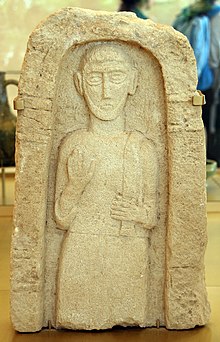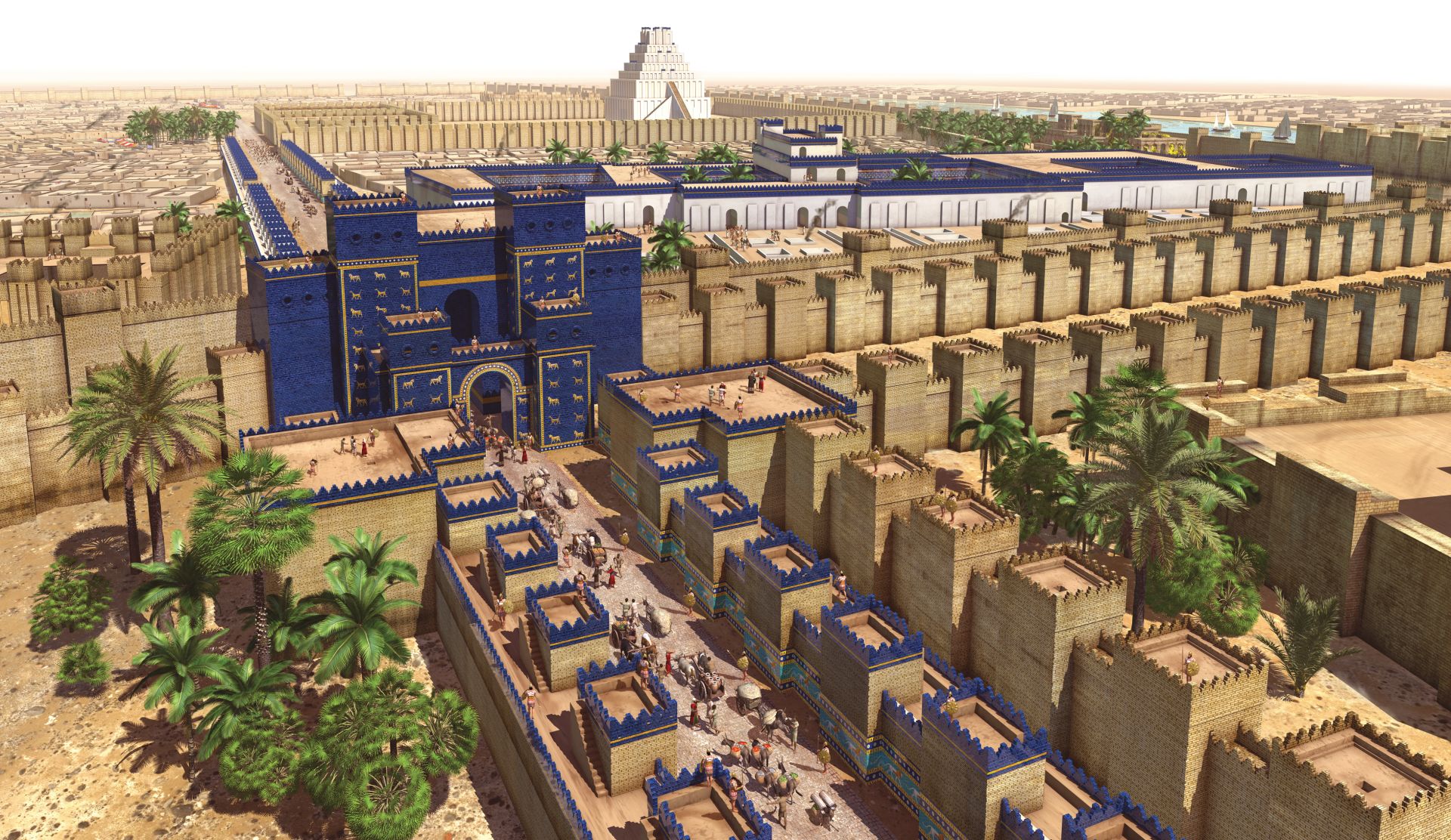I: Origins
"The perception of unattractiveness, the perception of death, the perception of danger, the perception of the repulsiveness of food, and the perception of non-delight in the entire world. These five perceptions, when developed and cultivated, are of great fruit and benefit, culminating in the deathless, having the deathless as their consummation." - Sutta 64 61(1) Perceptions (1)
Contacts between the Mycenaean Greeks and the Bronze Age Indian Kingdoms existed during the Axial and Bronze Ages, although neither side knew with whom they were dealing. That was the status of ancient commerce. A long network of intermediaries existed, slowly moving products from one location to another. Of course, by the time the Ancient Greeks recovered from the Bronze Age Collapse around 900 BCE - 800 BCE, enough knowledge of India had made its way to Hellas that one of their most famous myths revolved around the Wine God Dionysus invading India and being repelled from the banks of the Ganges. While some intrepid traders and explorers may have had direct contact with the peoples of the Indian Subcontinent, their names are lost to history in the Indian Subcontinent. Only during the reign of Alexander the Great was the first reported direct encounter made.
The monks warned off by the Persians were nicknamed 'gymnosophists' by the invading Macedonian Army when they marched into Bactria from Eranshahr. The moniker essentially means naked philosophers or naked smart men since, in contrast to the highly armored Macedonian troops, these monks only wore light linen clothes that made them appear naked. According to sources from the time, after consolidating his dominance over Bactria and Taxila, Alexander hosted a riddle tournament for these clever thinkers. Calanus and Dandamis were gymnosophists, and their names were most likely Hellenized versions of the local monks' true names. A direct source is Nearchus, the navarch/admiral of Alexander the Great's army who accompanied him during his conquests. According to Nearchus, this contest took place on the outskirts of Taxila, next to the vast army camps.
There, Onesicritus, a historian in league with Alexander found fifteen monks standing, sitting, and lying motionless in the unbearable summer heat. Onesicritus met Calanus at this place who encouraged the Greeks to do the same and hear his teachings. The Greek historian was not convinced and was wary of standing in the humid sun for hours on end. At this key juncture, Dandamis, who was said to be the oldest and wisest of the fifteen monks joined the conversation. Dandamis was a Taxilan who was very interested in the customs of his new Greek overlords. Onesicritus and Dandamis apparently spoke with one another for hours, discussing the similarities of the Greek philosophic doctrines of Socrates, Diogenes, Pythagoras, etc in relation to the Buddha and the Bodhisattvas. Dandamis concluded by the end of their conversation that whilst there were large similarities, he disapproved of the Greek's preference for custom over nature. Nearchus who had largely been silent in conversation bit back by arguing that Greeks also placed great importance on nature.
Despite the disagreement, Alexander the Great later heard of these monks and asked them to take part in a riddle contest, threatening to kill everyone who gave an incorrect answer. The question and the answer are lost to us, however, we do know that Alexander liked each and every answer given to him by the monks, and thus he let the monks go, showering them with gifts and riches. During this encounter, Nearchus and Onesicritus who were both interested in the talk of the monks, offered the fifteen monks to stay back and join them. The philosophical debate was something to be admired in the ancient world after all. Dandamis and another 5 monks decided to stay back, but Calanus and 8 other monks, interested in the proposition, joined Nearchus and Onesicritus [1]. As Alexander turned to return to Mesopotamia by marching through the Indus down south before veering towards Carmania in 326 BCE, Nearchus and Onescritus were left in charge of the fleet at the Hydaspes.
Under the disciplined outlook of Nearchus and the economic mastermind of Onescritus, what was once a fleet of rotting boats quickly followed Alexander the Great down south through the Indus. Sources from people such as Strabo later mention Nearchus’s dismay at the pressing of non-sailors into his fleet to fill in sailor numbers. Training able sailors in those times was worth its weight in gold, and Nearchus feared that many people would die from his upcoming voyage through the Persian Gulf if the sailors weren’t trained properly. Perhaps it was due to the shared nature of training that the monks themselves had once gone through in their past, but Calanus’s entourage proved to be invaluable to Onesicritus and Nearchus.
As the trainee trains along the straight path,
The knowledge of destruction arises first immediately followed by final knowledge.
Thereafter, when the fetters of existence are destroyed, for one liberated by final knowledge,
The knowledge arises: “My liberation is unshakeable.”
- A Greco-Buddhist retelling of the training of Nearchus’s sailors
Calanus and the other monks believed that just forcing the trainees to learn simple sailing abilities along the way was a risky idea, and instead used Buddhist themes of monk/ascetic training to discipline the novice sailors. Meditation was utilized to instill discipline in the trainees, while excellent behavior was encouraged to instill concentration. The student sailors gradually grew more consistent and steadfast as a group, picking up sailing abilities taught to them by their Macedonian teachers faster and safer than previously. By the time Nearchus’s fleet approached Alexandria on the Indus ruled by Oxyartes, his fleet was one that was reborn. Nearchus, Onesicritus, and the Macedonian sailing instructors were of course very impressed by this application of Buddhist themes among the sailors and its successes. Oxyartes himself is said to have remarked on the quality of the sailors as the ships passed, stroking the egos of Nearchus and Onesicritus.
Nearchus's Fleet passes through Alexandria on the Indus
After regrouping with Alexander at Pattala [2], Nearchus and Onesicritus prepared to sail into the Persian Gulf with 15,000 – 20,000 newly but highly trained sailors whilst Alexander’s army veered into the Gedrosian desert. Previously Nearchus had his doubts about the qualities of his seamen, but with Calanus’s aid, he was now confident about his fleet, and without further delay, and despite some warning signs like that of heavy winds and monsoon rains, his fleet set out. Nearchus’s fleet began a port-hopping campaign. It traveled to Colta first, before going to Calima second followed by Carnine, Cysa, and Mosarna. At Mosarna, Gedrosian sailors recruited by Alexander during his march joined up with Nearchus and directed him to Gwadar, where the fleet found an abundance of date palms and gardens with which the fleet resupplied itself.
The journey of Nearchus' fleet was mainly followed by the seizure of rich but independent port cities on the Persian side of the Persian Gulf, much to the chagrin of Calanus, who saw these conquests negatively. Calanus and his monks felt so out of place after the conquest of Chah-Bahar that they wanted to flee, opting to return to Taxila on foot. Strabo describes Nearchus' afflicted state in this report. Throughout their adventures together, Nearchus appears to have developed a rapport with Calanus, whom he regarded as a close friend after the two gradually broke the language barrier with one another. Nearchus, aided by Onesicritus and Leonnatus (one of Alexander’s generals assigned to the fleet), appears to have confronted Calanus and his monks. Calanus was mild, acknowledging that their mission as generals was to conquer, but that he personally couldn't stomach it, a view shared by the other monks.
After giving his word to make sure that the civilians of the conquered cities would be treated well, Calanus and the others were persuaded to stay with them. The following conquests in Qeys, Qeshm, Harmozeia, and Lazeh were remarkably gentle by ancient standards, highlighting the friendship and thus influence that Calanus enjoyed over Nearchus as time passed. Nearchus’s fleet shadowed the Peninsula of Oman, which had once been an Achaemenid Satrapy but had reasserted its independence following the Macedonian conquest and also docked at Tylos [3]. It wasn’t before long that Nearchus’s fleet reached the Tigris River. The fleet went as far north as the Euphrates before Nearchus turned back to rejoin Alexander at Susa. Calanus and his monks followed Nearchus to Susa, where Alexander welcomed the monks to his court showering them with praises to his Greek and Mesopotamian audience, praising the monk’s morality and quick wit according to Plutarch.
Calanus and his monks later followed Nearchus to Babylon, where Nearchus was appointed commander of the riverine fleets in preparation for Alexander’s planned invasion of Arabia after Nearchus’s marriage. Calanus and his monks settled down in the ancient city in early 324 BCE. Over the course of the next year, small but noticeable streams of monks and family members of these monks followed Calanus’s route to Babylon where they joined Calanus and his original 8 monks. Modern historians estimate that around 100 – 500 people related to Calanus and his monks arrived in Babylon during this time.
Ancient Babylon which became the first home of the Monks from Taxila in the West
And what interesting times these people were going to be embroiled in. In 323 BCE, Alexander the Great died, and his great Empire was now on the precipice.
[1] The PoD. Strabo mentions that Nearchus remarked later that all the monks rejected the offer historically.
[2] Bahmanbad in Sindh, OTL Pakistan.
[3] Bahrain.






